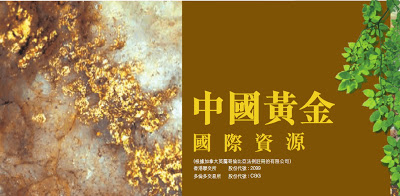High Peaks Pure Earth has translated a blogpost by Woeser written on April 2, 2013 for the Mandarin service of Radio Free Asia and published on her blog on April 4, 2013.
The post focuses on mining in the Gyama area of central Tibet and is a direct follow-up to the March 30, 2013 post on her blog. Subsequently, Woeser wrote several posts on her blog about Gyama and mining in Tibet, the English translations will be posted over the next weeks on High Peaks Pure Earth.




Picture 1 shows an illustration from the 2012 half-yearly report of the China Gold Group; Picture 2 shows the official news report of the launching ceremony of the Gyama second project phase; Picture 3 was taken in 2011 at Beijing’s Ethnic Minority Park, showing “The 60th Anniversary of the Peaceful Liberation of Tibet Exhibition”; Picture 4 shows a picture from the mining disaster that happened at the Gyama mining area.
“Was Lhasa’s Mining Disaster Caused By a ‘Natural Disaster’?”
By Woeser
The China Gold Group is a company belonging to the state-owned Assets Supervision and Administration Commission of the State Council; the township “Gyama” referred to by this government department as the “Gold-Copper Polymetallic Mine” is the hometown of the great Tibetan monarch, Songtsen Gampo, and is situated along the upper reaches of Lhasa River in Meldro Gungkar County. Six years ago, the China Gold Group combined 6 privately owned mining areas that had existed for many years, and continued to use its subordinate firm, Huatailong Mining Development Co., Ltd, to mine day and night, exploiting an amount of up to 12,000 tons per day.
The Gyama area is home to many different metals, including copper, molybdenum, lead, zinc, gold and silver. According to reports, the economic value of it exceeds 120 billion yuan. In August 2011, the China Gold Group, which changed its name to China Gold International Resources Corporation after entering the stock market, announced that the resources controlled in the Gyama mining zone, one of the company’s two biggest mining areas, had increased by 443%; and they were also going to continue to advance their plans to extend the mining activities, following their reputation to “march towards the 500 mark and build a world-class mining company”. In September last year, they launched “the second phase of the Gyama project”, “expecting it to produce over 60,000 tons of copper, almost 3000 tons of molybdenum, over 50 tons of silver, and 1 ton of gold per year, with the overall mining production reaching 12.6 million tons, making the sales revenue increase to 4 billion yuan.”
In fact, the Gyama mining area has already been extended from Gyama county to other surrounding counties. In this process, many small monasteries situated in the mountains have been forcefully abandoned, monks and nuns were expelled, herdsmen from many villages were resettled, and villages were transformed into mining depots. Also, many religious and traditional cultural relics existing in the area were severely damaged, including the religious cave of Padmasambhava, the pilgrimage route to the sacred Samye Monastery, an ancient sky burial platform, austere rock paintings as well as the sacred mountain, the holy lake and hot springs. Besides, because of the mining activities the area’s water resources have been severely polluted, causing the death of thousands of livestock, and making many local people be infected by strange diseases. Thus, local herdsmen went to appeal to the higher authorities to protest many times, but were simply dealt with as “people fostering splittism”. In 2009, a conflict occurred between herdsmen and the mining area because the company had taken water away during a drought, when armed police forces and riot squads entered the region, many locals were caught and the village head was sentenced but the people from the mining area who had beaten and injured the locals were not put under any further investigation.
No one really knows what actually happens in the area. Following the national highway number 318, about 65 kilometres to the east of Lhasa, we see an imposing Tibetan city gate with the words “the birthplace of Songtsen Gampo”, to its left a ticket office tells us that inside we find a scenic spot. Passing by tourists only get to witness the evenly paved streets, the newly and beautifully decorated buildings on either side of the road – inside, however, the scenic spot only occupies a small part, the large part is occupied by an inaccessible mining area. One can also see large trucks driving passed, even if tourists know that these belong to the mining areas, they probably still think that the mining projects launched by the authorities and the industry are benefiting local people. It was not until March 29 this year, when a severe mining disaster happened in the area, that the cruel reality was to some extent exposed.

The Party media first announced that it was a “natural disaster” that had caused the “mountain to collapse naturally”. The landslide extended over an area of 3 kilometres in length, covering over 200 cubic metres, altogether burying 83 workers. The media also stated that the disaster happened in the Purang cave on Mount Zeri in Trashigang Township, which belongs to the Gyama mining area. From Google Maps and Google Earth one can see the shocking fact that the mining area is so large that one map page is not sufficient to display the entire area. The road that had been specially paved for the mining area starts at Gyama village and leads into the cluster of mountains to then take a sudden turn, running along the other side of the mountains to then lead back to the national highway 318. So the mining area assumes the shape of the letter U, enclosing the Gyama village and the neighbouring Trashigang Township, separating the region through a criss-crossed road, cutting through the mountains, deeply penetrating it and creating large empty patches, leaving an image of a destroyed natural environment. The photos I present here were even taken two years ago, if one were to take photos again now, the landscape would show an even more devastating image.
Well, what kind of “natural disaster” could it have been that caused the “mountain to collapse naturally”? On the second day after the mining disaster, the official media stated that “several cracks were discovered in the mining area where a landslide had occurred, thus currently precautions are taken to prevent a secondary disaster”. They went from “natural disaster” to “secondary disaster”, these changes in expressions are simply absurd, aren’t they both saying one and the same thing, namely that the disaster was caused by nature and that it has nothing to do with people?
As it happened, a netizen who was familiar with the Gyama mining area wrote on Twitter: “…I have a friend who works there, it is said that the accident occurred at the site of the second project phase, but on the news they said it was the site of the first project phase and it was harmonised as a ‘natural disaster’…”. “The scope of the site of the second project phase is a few times bigger than the first, this year they were still constructing it to soon start operating. Now they say that the accident at the second site had actually occurred at the first site. There is the possibility that it was a geological disaster but it is not very likely, but of course, the government has to present it in that way”. He further said: “My friends in Gyama all said that the internet had been down for a few days. ‘All news is censored and blocked and it is impossible to leak out any information to the outside.’”
Indeed, on the internet we could initially find many voices that highly doubted whether the mining disaster was a natural and not actually a human one, yet the Central Propaganda Bureau was quick to issue a most important notice to all media outlets: “With regards to the landslide accident that happened at the site of the first project phase at a mining area in Lhasa, Tibet, all media must follow the official press releases by the Xinhua News Agency and the authoritative departments; all reports about the disaster must come from reliable sources, must be objective and true; it must be promptly reported on the disaster relief work and public opinion must be guided properly. No reports must be given on any sensitive issues, no journalists must be sent to the actual site to interview people.”
In view of this, it really is no surprise that all statements, from the company’s head office to the official media, have been so identical. What exactly are they trying to conceal? Is it that the mining disaster was too big, or are the damage and adverse consequences of the mining activity too devastating? All in all, Gyama, this once so beautiful and vigorous place that used to be home to “the dragon’s pulse”, is now suffering from the most severe evisceration and this is an obvious fact that cannot be concealed.
April 2, 2013
Further reading:
Landslide Induced by Frenzied Mining at Hometown of Songtsen Gampo is said to be a “Natural Disaster” By Woeser: http://highpeakspureearth.com/2013/landslide-induced-by-frenzied-mining-at-hometown-of-songtsen-gampo-is-said-to-be-a-natural-disaster-by-woeser/
“Songtsen Gampo’s Hometown Is About To Be Completely Excavated” By Woeser: http://highpeakspureearth.com/2010/songtsen-gampos-hometown-is-about-to-be-completely-excavated-by-woeser/
“Tibet’s Water Pollution and China’s ‘Global Warming’” by Woeser: http://highpeakspureearth.com/2009/tibets-water-pollution-and-chinas-global-warming-by-woeser/
China Dialogue: “Tibet’s mining menace” http://www.chinadialogue.net/article/show/single/en/4509-Tibet-s-mining-menace-
New York Times: Fatal Landslide Draws Attention to the Toll of Mining on Tibet http://www.nytimes.com/2013/04/03/world/asia/deadly-tibetan-landslide-draws-attention-to-mining.html?pagewanted=all&_r=0





Follow Us!